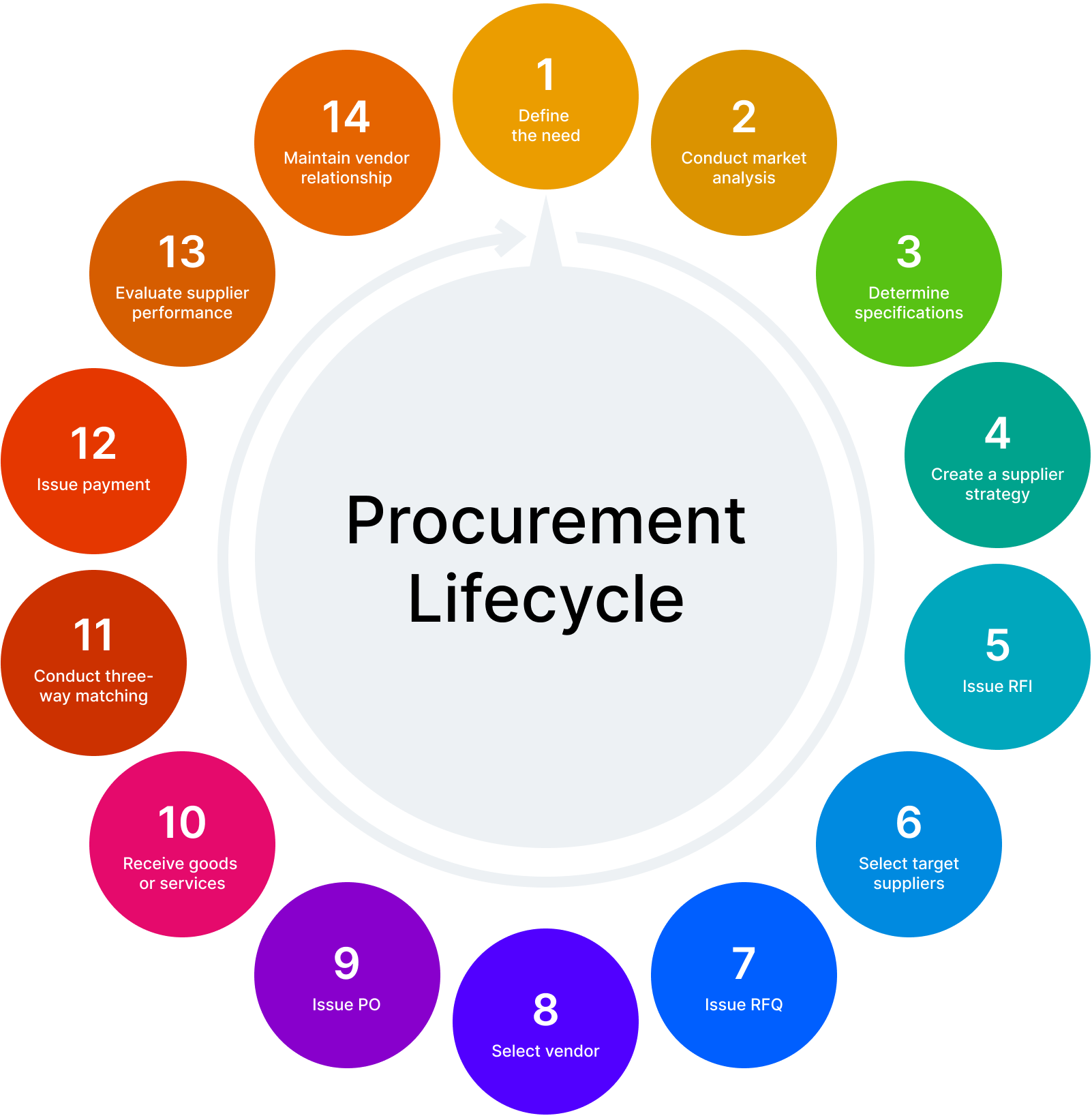Steps of a Purchasing Cycle

The purchasing cycle, also known as the procurement cycle, typically involves several key steps from identifying the need for goods or services to the final payment to suppliers. Here are the common steps in a purchasing cycle:
Identifying Needs: The process begins with identifying the need for goods, services, or works within the organization. This can be triggered by various factors such as inventory levels, production requirements, or new project initiatives.
Requisition: Once the need is identified, a requisition is created detailing the required items, quantities, specifications, and any other relevant information. The requisition serves as a formal request for procurement.
Supplier Selection: The procurement team or purchasing manager identifies potential suppliers capable of fulfilling the requisition requirements. This may involve researching suppliers, soliciting bids or proposals, evaluating supplier capabilities, and conducting supplier assessments.
Request for Quotation (RFQ) or Request for Proposal (RFP): Depending on the nature of the procurement, the organization may issue RFQs or RFPs to solicit pricing and terms from selected suppliers. This helps in comparing offers and selecting the best supplier.
Negotiation: Negotiations with suppliers may occur to finalize pricing, terms, delivery schedules, and other contractual conditions. This stage aims to secure the most favorable terms for the organization while ensuring supplier satisfaction.
Purchase Order (PO) Creation: Once negotiations are complete, a purchase order is issued to the chosen supplier. The PO includes details such as item descriptions, quantities, prices, delivery dates, terms, and conditions. It serves as a legally binding document between the buyer and supplier.
Order Confirmation: Upon receiving the purchase order, the supplier confirms acceptance of the order and acknowledges the terms and conditions specified in the PO.
Goods Receipt: When the ordered goods or services are delivered, the receiving department verifies the delivery against the purchase order to ensure accuracy and quality. This may involve inspection and acceptance of the goods.
Invoice Processing: After the goods or services are received and accepted, the supplier issues an invoice to the organization for payment. The invoice is matched with the corresponding purchase order and receiving documents for accuracy.
Invoice Approval and Payment: The invoice undergoes review and approval by the appropriate personnel within the organization. Once approved, payment is processed according to the agreed-upon terms, which may involve issuing a check, initiating a bank transfer, or using electronic payment methods.
Supplier Performance Evaluation: Periodically, the organization evaluates supplier performance based on factors such as quality, delivery timeliness, responsiveness, and adherence to contractual terms. This feedback helps in supplier management and improvement efforts.
Record Keeping and Documentation: Throughout the purchasing cycle, proper documentation of all transactions, including purchase orders, invoices, contracts, and correspondence, is maintained for audit purposes and future reference.
By following these steps in the purchasing cycle, organizations can effectively manage their procurement processes, ensure timely delivery of goods and services, and maintain positive relationships with suppliers.
Thank you,